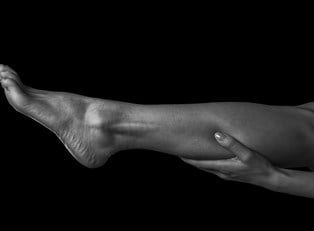Restless leg syndrome (RLS) is a neurological condition that negatively impacts the muscle movements in your legs. This is a disease that affects up to ten percent of the United States population, although it often goes unrecognized or undiagnosed.
Symptoms
If you have restless leg syndrome, then you experience painful or uncomfortable sensations in your legs that accompanies an overwhelming urge to move them in order to temporarily relieve the sensations. These sensations are typically described as pulling, throbbing, itching, crawling, creeping, or aching. Other signs and symptoms for this condition include:
- Relief by movement: The uncomfortable sensations that accompany restless leg syndrome are temporarily relieved by stretching, jiggling your legs, walking, or pacing around.
- Sensation when at rest: The sensations of restless leg syndrome will usually begin after you have been sitting or lying down for an extended period of time. This can make traveling in a car or airplane very difficult, as well as sitting still in a movie theater or something similar. This is also why it is very hard for people who suffer from restless leg syndrome to get an adequate amount of sleep.
- Sensation during the evening: Since lying still makes the symptoms of restless leg syndrome worse, bedtime can be especially difficult for people who suffer from RLS. This can lead to many health problems that are caused by chronic sleep deprivation, such as high blood pressure and erectile dysfunction.
- Nighttime leg twitching: There is another, closely related condition called periodic limb movement disorder. This condition causes your legs to twitch and kick throughout the night while you sleep, and it is common for restless leg syndrome to occur in conjunction with it as well.
Symptoms for restless leg syndrome will range from mild to completely intolerable. It is common for them to fluctuate in severity over time, sometimes even completely disappearing for periods of time before randomly recurring again.
Diagnosis
Diagnosing restless leg syndrome is usually fairly straightforward, even though there is no standardized test that is used to diagnose the condition. Your doctor will probably ask for your medical history, family history, and a description of your symptoms. If they are in line with the criteria for restless leg syndrome, then the doctor will likely order blood tests to make sure that your symptoms aren’t caused by any other medical condition, such as an iron deficiency. If this is the case, then treatment for this condition will be the first priority, as this will probably relieve your RLS symptoms as well.
Your doctor will also likely refer you to a sleep specialist to help you figure out how to manage your sleep patterns correctly with restless leg syndrome. This will usually involve an overnight stay at a sleep clinic, where the doctors are able to study your sleep and see if another sleep disorder is involved, such as sleep apnea.



